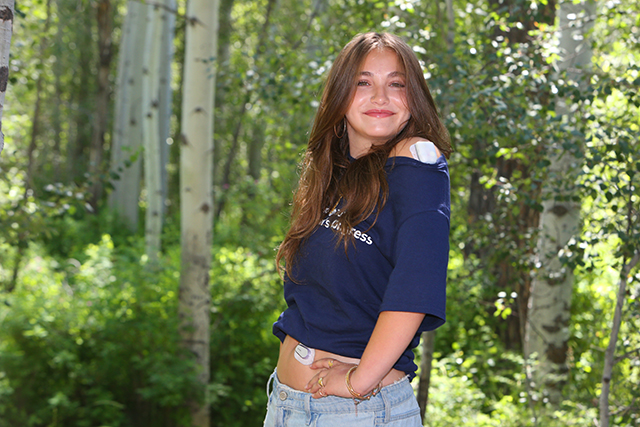Fishing Lake Billy Chinook
Published 5:00 am Thursday, April 7, 2011

- Fishing Lake Billy Chinook
LAKE BILLY CHINOOK — The sun finally rose over the steep canyon wall as we sat in the boat near the junction of the Deschutes River and Lake Billy Chinook.
An otter tended to his den on the shore nearby as a juvenile bald eagle stood watch on a rock high above the lake. Birds chirped away incessantly as I reeled in one 12-inch brown trout and then, a few minutes later, another.
Trending
A white buoy marked “Angling Boundary” designated where the lake ended and the river began — an important distinction, because on the river fishing is restricted to artificial flies and lures.
John Garrison guided his 24-foot pontoon boat past the buoy to see if anglers in another boat were having any success.
Turns out, one of them had just caught and released a 20-inch bull trout. The only problem was, that angler was fishing with a worm-and-spinner combination.
Garrison informed them, politely, that fishing with bait there was illegal.
The angler responded with something about how he had been bait fishing there for 20 years.
Garrison, who operates a guide service out of Sunriver, told the angler it was better to hear about the regulations from a fellow fisherman than from an officer with the Oregon State Police, who could issue him a citation.
Trending
The buoy — a similar one of which is located on the Crooked River arm of Lake Billy Chinook — is new this year.
“In the past, there was a lot of confusion on the part of anglers and state police on where the reservoir ended and where the stream began,” said Brett Hodgson, a Bend-based biologist for the Oregon Department of Fish and Wildlife.
The buoy should end the confusion.
Garrison and I would fish just 50 feet away from the confused fishermen — but we would do so legally. He anchored the boat a few feet from the buoy and we set up three rods, two of which we rigged with worms and one with herring. (Garrison has a two-rod angling license, which costs $17, in addition to an annual angling license).
The Deschutes arm of Lake Billy Chinook is home to a variety of trout species, including bull trout, brown trout, rainbow trout and kokanee.
While the Metolius arm of the reservoir is known to hold more bull trout, the Deschutes arm offers a better chance to catch four different species of trout.
After landing the two brown trout earlier, fishing had slowed dramatically on a sunny, 65-degree day. On my partner’s Fishfinder, the reading for the water temperature was 50 degrees — still fairly cold, but better than a couple of weeks ago when, according to Garrison, the water on the Metolius arm was about 43 degrees.
I suggested we cast lures toward shore instead of still-fishing, but Garrison was adamant about using the worms and herring.
Just a few minutes after setting up at the buoy, I landed a 16-inch bull trout and, shortly thereafter, a 15-inch rainbow trout.
Then, just a couple minutes later, the rod with the herring on the line bent deeply.
“That’s a bull,” Garrison said.
I ripped the rod out of its holder, gave two cranks on the reel, then set the hook.
The fish pulled hard, stripping line off the reel. After a five-minute battle, I had it close to the boat, and I maneuvered it into the net Garrison held over the side.
The fish measured 25 inches and weighed 9 pounds — the biggest bull trout I have ever landed.
“Don’t ever tell the guide what to do!” Garrison barked with a grin. “Throw lures? I said no, and where’d we end up?”
I decided to keep the big bull after releasing the four smaller trout I had landed earlier.
On Lake Billy Chinook, anglers are allowed to keep one bull trout longer than 24 inches per day. The trout bag limit is five. All bull trout not kept in the daily catch limit must be immediately released unharmed.
Bull trout are typically characterized by their aggressive feeding on kokanee and by their coloring: olive green to bronze backs, with pale yellow, orange or salmon-colored spots.
Federally listed as threatened under the Endangered Species Act of 1998, bull trout are continuing to thrive in Lake Billy Chinook, though they appear a bit skinnier than usual this spring.
“The last spawner escapement (numbers) for kokanee was a little bit down,” Hodgson noted. “There may not be as much kokanee available in the reservoir for those bull trout right now.”
While still-fishing with worms and herring was our method for the day, other options include trolling for bulls and browns, casting lures for all species and jigging for kokanee throughout the reservoir.
The water near the buoy is a popular spot to fish, particularly in the summertime for those targeting rainbows and browns, according to Hodgson.
“The cold water coming down the Deschutes from the Foley Waters area is a big attraction to all those species,” Hodgson said. “Everything is more dispersed throughout the reservoir this time of year.”
To aid the reintroduction of steelhead and chinook salmon into Lake Billy Chinook and the Upper Deschutes Basin, Portland General Electric has altered how water is released from Round Butte Dam, resulting in a cooling of the reservoir.
“That will change the distribution of fish in the reservoir,” Hodgson explained. “How that affects angling, everybody will have to wait and see. Overall, it should make it a more productive water body.”
It was certainly productive for us on that day last week, as we let our patience prevail to land six sizable trout, including the unforgettable 9-pounder.
“A very slow day turned into a very good day,” Garrison reflected, “because we were persistent.”








